Recent posts
-

-
 What Are THCa Diamonds?October 14, 2025
What Are THCa Diamonds?October 14, 2025 -
 Delta 9 Gummies GuideOctober 8, 2025
Delta 9 Gummies GuideOctober 8, 2025 -
 Head High vs Body High: A Guide to Cannabis EffectsOctober 1, 2025
Head High vs Body High: A Guide to Cannabis EffectsOctober 1, 2025 -
 What is THCA Crumble?September 22, 2025
What is THCA Crumble?September 22, 2025 -
 10 Ways to Elevate Self-Care Awareness MonthSeptember 14, 2025
10 Ways to Elevate Self-Care Awareness MonthSeptember 14, 2025
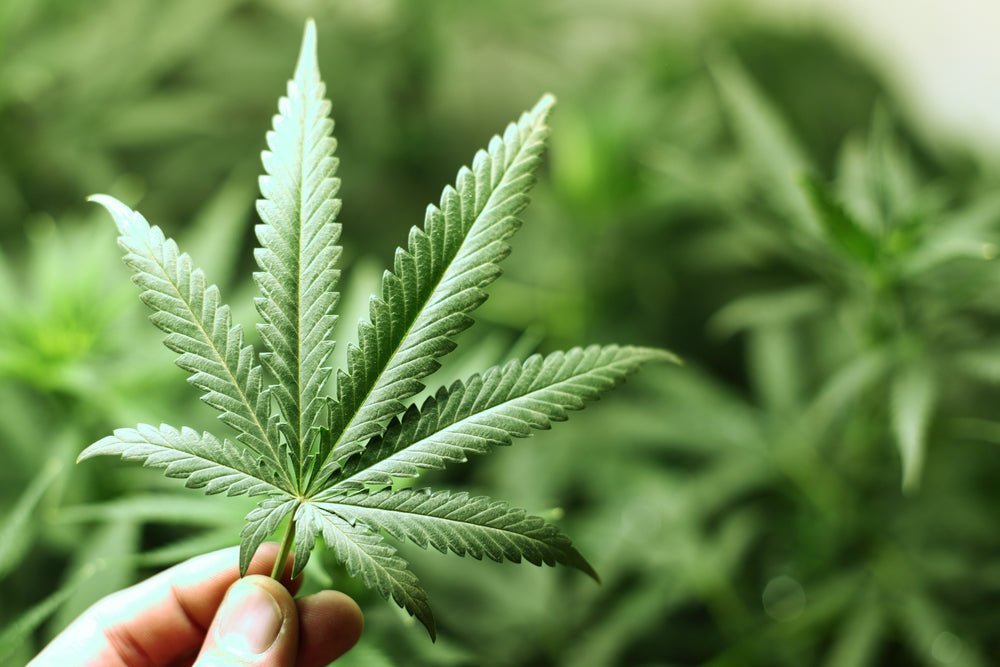
Indica vs Sativa vs Hybrid: Differences, Effects, and Uses
By Zero Point
Table of Contents
Since their introduction over 200 years ago, the terms "Indica" and "Sativa" have been used to categorize cannabis plants based on appearance and effects. However, their relevance in modern cannabis is being questioned by new research.
What Do The Terms Indica and Sativa Mean?
Cannabis, a genus of flowering plants in the Cannabaceae family, includes three primary species: Cannabis sativa, Cannabis indica, and Cannabis ruderalis. While ruderalis is less commonly discussed due to its lower THC content and limited use, Indica and Sativa are the two main types that dominate the conversation in both recreational and medicinal cannabis circles. Each possesses unique characteristics, effects, and uses that cater to a wide array of needs and preferences. This blog delves into the origins, characteristics, popular strains, and uses of each type, aiming to provide a comprehensive understanding that can guide users in making informed decisions.

Cannabis Indica
Origin and Discovery
The discovery of Indica strains can be traced back to the 18th century, when French biologist Jean-Baptiste Lamarck differentiated them from Sativas based on their physical characteristics. Originating from the Hindu Kush region of the Middle East, specifically from countries like Afghanistan, Pakistan, and India, Indica plants adapted to the harsh, dry, and turbulent climate of their environment, developing unique features that distinguish them from their Sativa counterparts. This variety was historically cherished for its resin production, leading to the creation of hashish, a concentrated form of cannabis.
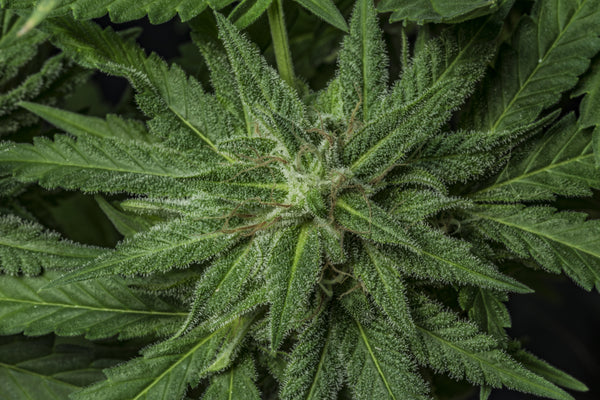
Physical Characteristics
Indica plants are typically shorter and bushier than Sativas, with wide, dark green leaves. They grow faster and yield more, making them favorable for many growers. Their compact size is advantageous for indoor cultivation, where space can be a limiting factor.
Indica Terpene Profile
Indica strains are renowned for their deeply relaxing and sedating effects. They produce a "body high," which is often sought after for nighttime use. This makes Indicas the go-to choice for those looking to unwind after a long day or seeking a deep and restful sleep.
Indica cannabis strains, possess a unique terpene profile that contributes significantly to their properties and therapeutic benefits. These aromatic compounds are not only responsible for the plant's scent and flavor but also play a crucial role in the effects experienced by users. Here’s an overview of common terpenes found in Indica strains and their associated properties:
Common Terpenes in Indica Strains
- Myrcene: Predominantly found in Indica strains, myrcene is known for its earthy, musky aroma, reminiscent of cloves. It is the most abundant terpene in cannabis and is believed to enhance THC's intoxicating effects, promoting relaxation and sedation. Myrcene is also noted for its anti-inflammatory, analgesic (pain-relieving), and antibiotic properties, making it a key player in the soothing effects attributed to Indica strains.
- Linalool: Linalool offers a floral, lavender-like aroma and is known for its stress-relieving, anti-anxiety, and antidepressant properties. This terpene can also provide neuroprotective benefits and is crucial in counteracting THC-induced anxiety, making it a valuable component of Indica's relaxing profile.
- Beta-caryophyllene: Though present in both Indica and Sativa strains, caryophyllene is notable for its spicy, peppery scent. It can interact with the body's endocannabinoid system, particularly CB2 receptors, offering anti-inflammatory, analgesic, and anti-anxiety benefits. Its presence in Indica strains contributes to the overall sense of bodily relaxation and well-being.
- Humulene: Characterized by a hoppy, earthy aroma, humulene is found in hops, coriander, cloves, and cannabis. It has anti-inflammatory and appetite-suppressant properties. In Indica strains, humulene can help modulate the munchies often associated with cannabis use and contribute to the therapeutic palette with its inflammation-fighting capabilities.
- Limonene: While more commonly associated with uplifting Sativa strains, limonene is also found in certain Indica strains, contributing citrusy notes to the aroma profile. It boasts mood-enhancing, anti-stress, and antibacterial properties. When present in Indica strains, limonene can add a refreshing uplift to the typically sedative and relaxing effects, offering a more balanced experience.
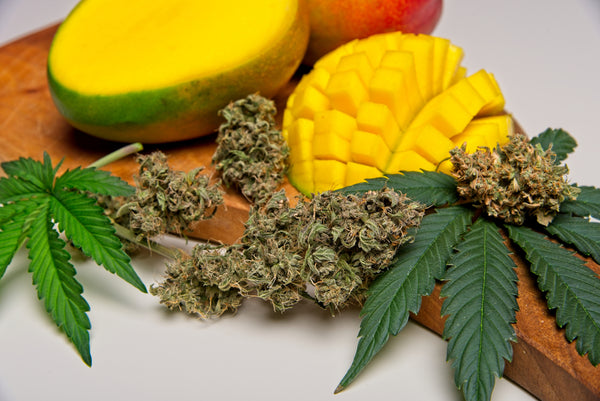
Indica Terpene Effects
- Relaxation and Sedation: The terpene profile of Indica strains is meticulously aligned with their renowned body-high effects, emphasizing physical relaxation, stress relief, and sedation. These terpenes synergize with cannabinoids to soothe the body and mind, making Indica strains ideal for evening or nighttime use.
- Therapeutic Benefits: Indica terpenes contribute to the strain's effectiveness in treating various conditions, including chronic pain, inflammation, insomnia, anxiety, and muscle spasms. Their analgesic, anti-inflammatory, and relaxant properties are leveraged in medical cannabis applications.
- Aroma and Flavor: Indica strains are characterized by their rich, earthy, and sometimes fruity aromas, directly influenced by their terpene content. The sensory experience of these strains is as integral to their appeal as the physical and mental effects they induce.
Understanding the terpene profiles of Indica strains allows users and medical patients to select strains that align more closely with their desired outcomes, whether for relaxation, pain relief, or other therapeutic effects.
Popular Indica Strains
- Granddaddy Purple: This strain stands out for its striking purple hues, matched by a complex berry and grape aroma, and its ability to relieve stress, pain, and insomnia, fostering relaxation.
- Bubba Kush: A heavyweight in the Indica family, Bubba Kush is famed for its intense, tranquilizing effects that envelop the body in relaxation and sleepiness. Its sweet, earthy flavors with hints of chocolate and coffee make it a pleasant choice for those looking to ease stress, insomnia, and pain.
- Blue Cheese: This strain is a unique mix of Blueberry and UK Cheese, distinguished by its distinctive cheesy aroma with sweet blueberry undertones. Blue Cheese delivers a relaxing, soothing high that eases muscle tension and promotes a calm, happy state of mind, making it perfect for winding down in the evening.
- Afghan Kush: Originating from the mountainous regions of Afghanistan, Afghan Kush is a pure Indica strain known for its heavy resin production and powerful sedative effects. Ideal for those suffering from insomnia or chronic pain, it provides a profound sense of physical relaxation and mental peace.
- Hindu Kush: Named after the mountain range stretching between Pakistan and Afghanistan, Hindu Kush is a pure Indica strain celebrated for its therapeutic qualities. It offers a deeply relaxing, almost meditative high, alongside its earthy, sweet aroma, making it ideal for stress relief and profound relaxation.
Cannabis Sativa
Origin and Discovery
Sativa strains trace their origins to the equatorial regions of the world, such as Colombia, Mexico, Thailand, and Southeast Asia. These areas' warm and consistent climate conditions have influenced the development of Sativa plants' distinct characteristics. The term "Sativa" was first introduced in the 18th century to describe hemp plants found in Europe and western Eurasia, emphasizing their use for seeds and fiber rather than intoxication.
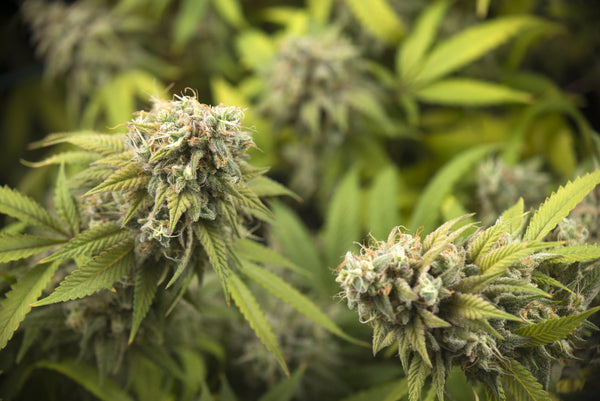
Physical Characteristics
Sativa plants are notably taller and thinner than their Indica counterparts, with narrow, light green leaves. They thrive in long, hot summers, requiring more time to mature fully compared to Indicas. Their height can reach up to 12 feet or more, making them more suited for outdoor cultivation.
Sativa Terpene Profile
Sativas are celebrated for their "mind high," a stimulating experience that contrasts sharply with the body-focused effects of Indica strains. This cerebral uplift is often associated with an increase in energy, creativity, and focus, making Sativa strains particularly appealing for daytime use.
Sativa strains of cannabis effects are largely influenced by their unique terpene profiles. Terpenes are aromatic compounds found in many plants, including cannabis, contributing to their aroma and effects. The terpene profile of Sativa strains often results in distinct properties and therapeutic benefits.
Common Terpenes in Sativa Strains
-
Limonene: This terpene is characterized by a citrus scent and is commonly found in the rinds of citrus fruits as well as in cannabis. Limonene is associated with mood elevation, stress relief, and antibacterial properties. In Sativa strains, limonene can contribute to the overall uplifting and energizing effects.
-
Pinene: As the name suggests, pinene has a pine-like aroma. It's the most common terpene in the natural world and is found in pine needles, rosemary, basil, and cannabis. Pinene is known for its ability to increase alertness, counteract some THC effects like memory loss, and has anti-inflammatory properties. In Sativa strains, pinene supports mental clarity and focus.
-
Beta-caryophyllene: Offering a spicy, peppery aroma, caryophyllene is unique because it can also act as a cannabinoid, binding to CB2 receptors in the body and contributing to its anti-inflammatory and analgesic properties. This terpene can help reduce anxiety and stress, making it a valuable component of many Sativa strains.
-
Terpinolene: Terpinolene has a complex aroma with notes of pine, floral, herb, and citrus. It is found in a variety of plants including sage, rosemary, and apple trees. Terpinolene is known for its antioxidant, sedative, antibacterial, and antifungal properties. In Sativa strains, it contributes to the nuanced uplifting effects, often accompanied by creativity and energy.
-
Myrcene: Though commonly associated with Indica strains for its sedative effects, myrcene is also present in many Sativa strains but in lower concentrations. Myrcene has a musky, earthy aroma and contributes to the therapeutic properties of cannabis, including anti-inflammatory and analgesic effects. In Sativa strains, lower levels of myrcene allow the more stimulating terpenes to dominate, shaping their energetic profile.
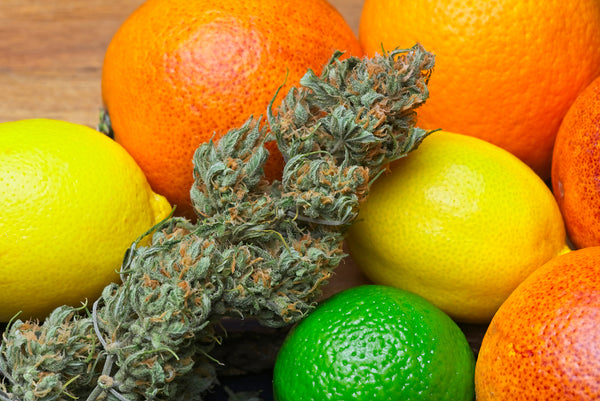
Sativa Properties and Effects
- Energizing and Uplifting: The terpene profile of Sativa strains promotes an energetic, uplifting high that can enhance mood, creativity, and focus.
- Therapeutic Benefits: Beyond recreational use, Sativa terpenes offer therapeutic benefits such as stress relief, anti-inflammatory effects, pain relief, and potential aid in managing anxiety and depression.
- Aroma and Flavor: The aromatic terpenes in Sativa strains contribute to their distinctive citrusy, piney, and spicy scents and flavors, making the sensory experience of consuming Sativa strains as enjoyable as their effects.
Understanding the terpene profiles of Sativa strains can help users select a strain that aligns with their desired effects, whether for therapeutic or recreational purposes.
Popular Sativa Strains
- Green Crack: Despite its provocative name, Green Crack is famed for its energizing effects, providing users with a sharp focus that can help tackle the to-do list with vigor.
- Sour Diesel: Known for its pungent, diesel-like aroma, this strain offers long-lasting relief from depression and pain, fueling a productive day with its invigorating effects.
- Jack Herer: Named after the legendary cannabis activist, Jack Herer strains spark creativity and bliss, making it a favorite among artists and thinkers.
- Durban Poison: With roots in South Africa, Durban Poison is known for its pure, energetic high that invigorates the mind, perfect for exploring creative endeavors or enjoying nature.
- Super Silver Haze: This award-winning strain is known for its uplifting and euphoric high, combined with a sense of physical relaxation that doesn't impede mobility, making it ideal for social activities or creative projects.
Cannabis Hybrid
Origin and Discovery
Hybrids are the result of crossbreeding Indica and Sativa strains, an endeavor pursued by growers aiming to blend and enhance specific characteristics from each parent type. This selective breeding allows for a spectrum of effects, aromas, and flavors, providing a tailored cannabis experience. Hybrid strains can exhibit a wide range of characteristics, with some leaning more towards Indica-dominance and others favoring Sativa traits, depending on the genetic lineage and breeding goals.

Effects
The effects of hybrid strains can vary significantly, offering a balance between the sedating body high of Indica and the energizing mind high of Sativa. This versatility makes hybrids particularly popular among both medical and recreational users, as they can be tailored to address specific needs or preferences. For instance, a hybrid might provide the perfect equilibrium of relaxation and alertness, making it suitable for use throughout the day without overwhelming sedation or excessive stimulation.
Popular Hybrid Strains
- Blue Dream: A Sativa-dominant hybrid, Blue Dream is beloved for its soothing yet euphoric effects and a high that balances full-body relaxation with gentle cerebral invigoration. It's especially popular among those treating pain, depression, nausea, and other ailments requiring a high THC strain.
- GG4 (formerly Gorilla Glue #4): Renowned for its potent effects, GG4 locks users in deep relaxation while inducing a joyful euphoria, perfect for unwinding after a long day.
- Girl Scout Cookies: This strain offers a sweet and earthy aroma, leading to powerful relaxation with a happy, euphoric twist that appeals to a wide range of users.
- Pineapple Express: Pineapple Express is a Sativa-dominant hybrid that offers a long-lasting energetic buzz, perfect for productive afternoons and creative escapes. Its tropical aroma and taste are as delightful as its effects.
- OG Kush: A cornerstone in the cannabis world, OG Kush provides stress relief coupled with a mix of uplifting euphoria and relaxation, embodying the quintessential hybrid experience.
Cannabis Ruderalis
Cannabis ruderalis is a lesser-known species of cannabis, distinct from its more popular cousins, Cannabis indica and Cannabis sativa, primarily due to its unique growing characteristics and lower concentrations of THC, the principal psychoactive compound in cannabis. Ruderalis offers interesting properties and has played a crucial role in the development of autoflowering cannabis strains, thanks to its genetic traits.
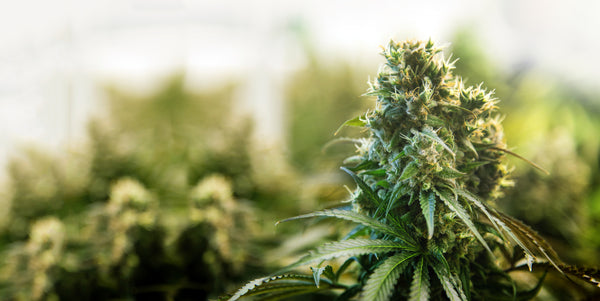
Origin and Characteristics
Cannabis ruderalis originates from Central Asia, Eastern Europe, and Russia, where it adapted to the harsh climates and shorter growing seasons of these regions. Unlike indica and sativa strains, which are photoperiod-dependent (requiring specific light cycles to begin flowering), ruderalis strains are autoflowering. This means they flower based on age rather than changes in the light cycle, a trait that has significantly influenced cannabis cultivation.
Ruderalis plants are typically small and hardy, usually growing no taller than 2 feet. They have a rugged appearance with wide, light green leaves. The autoflowering characteristic of ruderalis makes it a valuable genetic resource for breeders looking to develop strains that are less dependent on environmental conditions.
THC and CBD Content
Cannabis ruderalis naturally contains lower levels of THC compared to its indica and sativa counterparts, making it less desirable for those seeking the psychoactive effects commonly associated with cannabis use. However, it often has relatively high levels of CBD (cannabidiol), a non-psychoactive cannabinoid that has gained attention for its potential therapeutic benefits, including anti-inflammatory, analgesic, and anti-anxiety properties.
Use in Hybrid Strains
The primary significance of Cannabis ruderalis in the cannabis industry lies in its autoflowering trait, which has been leveraged through crossbreeding with indica and sativa strains to produce hybrid strains that automatically flower after a certain period of time, regardless of the light cycle. This makes autoflowering hybrids particularly appealing for cultivation in regions with less predictable sunlight patterns and for indoor growers who seek to simplify the growing process. These hybrids combine the desirable effects and flavors of traditional cannabis strains with the hardiness and autoflowering characteristics of ruderalis.
Comparison Table: Indica vs Sativa vs Hybrid
| Attribute | Indica | Sativa | Hybrid |
|---|---|---|---|
| Origin & Discovery | Hindu Kush regions; shorter, bushy plants | Equatorial regions (Colombia, Thailand); tall plants | Crossbreeds of Indica & Sativa, bred for desired traits |
| Plant Morphology | Short, bushy; wide, dark-green leaves; compact growth | Tall, slender; narrow light-green leaves; long flowering cycles | Varies—can lean Indica or Sativa; medium height; mixed leaf shapes |
| Terpene Profile | Dominated by myrcene, linalool, beta-caryophyllene, humulene; may include limonene | Higher in limonene, pinene, terpinolene, some myrcene | Blends of both terpene profiles; varies by dominant parent |
| Effects | Relaxing “body high”; sedative; used for pain, anxiety, insomnia | Energizing “mind high”; creativity, focus, uplifting mood | Balanced, combining Indica's relaxation with Sativa's mental clarity |
| Common Uses | Nighttime use; stress relief, muscle relaxation, sleep support | Daytime use; productivity, creativity, mood enhancement | Versatile applications—can be tailored for both therapeutic and recreational use |
| Popular Strains | Bubba Kush, Granddaddy Purple, Blue Cheese, Hindu Kush, Afghan Kush | Green Crack, Sour Diesel, Jack Herer, Durban Poison, Super Silver Haze | Blue Dream, OG Kush, Pineapple Express, Girl Scout Cookies, GG4 |
Indica, Sativa, Hybrid - Selection and Use
Choosing the right cannabis strain, whether Indica, Sativa, or Hybrid, depends on the desired effects and needs of the individual. The traditional Indica/Sativa classification provides a basic framework, but the unique combination of cannabinoids and terpenes in each strain plays a crucial role in its therapeutic effects.
Cannabinoids like THC and CBD influence the potency and type of high, while terpenes contribute to the strain's aroma, flavor, and additional therapeutic benefits. Therefore, understanding the specific profile of a strain can offer a more nuanced approach to selecting the right cannabis for personal use.
Recent research suggests that the effects of cannabis are less about Indica or Sativa categories and more about this complex interplay of chemical compounds. Consumers are encouraged to consider lab reports and descriptions of individual strains, focusing on cannabinoid and terpene profiles, to make informed choices based on the effects they seek.
Legal Status
The legal status of cannabis varies widely across different regions, reflecting a spectrum of regulations that govern its medical and recreational use. As legalization expands, ethical considerations regarding responsible use, equitable access, and the potential for abuse remain paramount. The evolving legal landscape challenges users, healthcare professionals, and policymakers to navigate the complex interplay between societal norms, medical research, and individual freedoms.
Conclusion
Understanding the differences between Indica, Sativa, and Hybrid cannabis strains is crucial for both medical and recreational users seeking to make informed choices. This exploration highlights the importance of considering the unique effects, uses, and origins of each type, as well as the cultural and historical context that has shaped their development. As the conversation around cannabis continues to evolve, further research and responsible use will pave the way for a deeper appreciation of its potential benefits and complexities.
FAQ: Indica vs Sativa vs Hybrid
What is the main difference between Indica and Sativa?
Indica strains are typically relaxing and sedating, making them popular for nighttime use and for managing pain or insomnia. Sativa strains are more energizing and uplifting, making them better suited for daytime use and creative activities.
What are hybrid strains?
Hybrid strains are crossbreeds of Indica and Sativa. They can be Indica-dominant, Sativa-dominant, or balanced, and are designed to offer effects that combine the best qualities of both parent strains.
How do I choose between Indica, Sativa, or Hybrid?
Your choice depends on your goals. For relaxation, sleep, or pain relief, Indica may be best. For energy, focus, or creativity, try Sativa. If you want a mix of both, hybrids are a good option.
Are the effects of cannabis strains guaranteed?
Not exactly. Effects can vary from person to person due to individual body chemistry, dosage, terpene profile, and method of use.
What is Ruderalis?
Ruderalis is a lesser-known type of cannabis, mainly used for its auto-flowering traits in breeding. It has low THC and is rarely consumed for its effects.
Which strain is better for beginners?
Hybrids with balanced THC and CBD levels are often recommended for beginners because they provide a moderate experience and predictable effects.
Can Indica or Sativa affect anxiety differently?
Yes. Some users find Indica strains calming for anxiety, while others prefer the uplifting effects of Sativa. Always start with a low dose to see how you react.
Are there legal differences between Indica, Sativa, and Hybrid?
Legal status usually depends on THC content, not strain type. Always check local laws before purchasing or using cannabis products.








